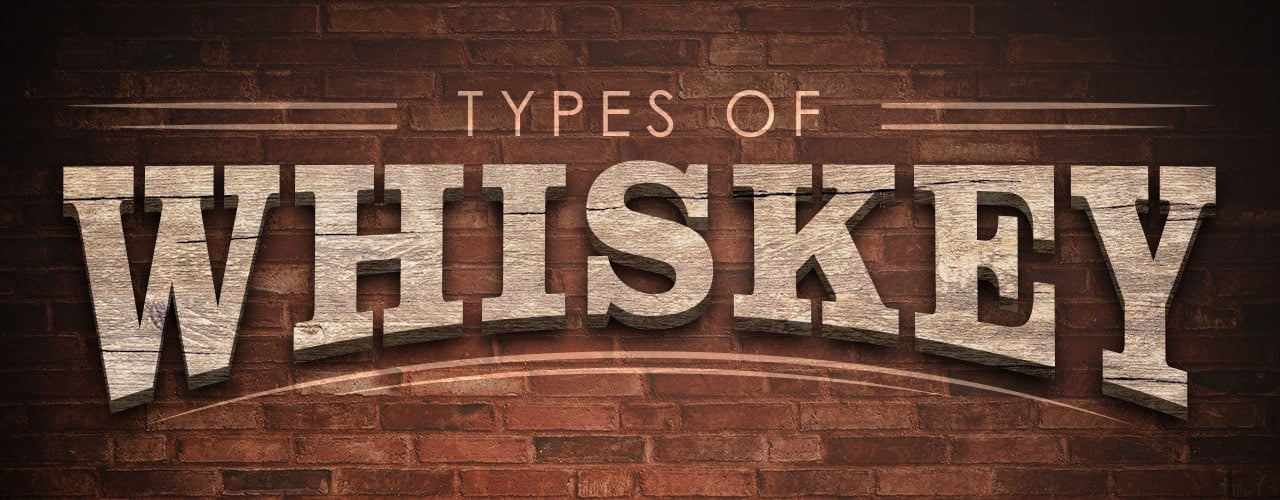
Types of Whiskey
Last updated on 2/5/2021Identifying the different types of whiskey isn’t just the realm of the bartender. Some customers will simply tell their server, “Bring me an Old Fashioned.” To provide a high level of service, you must know enough about whiskey to respond with, “Do you prefer bourbon or rye in your Old Fashioned cocktail?” While especially important in fine dining etiquette, it applies to any bar or restaurant that stocks whiskey.
With an understanding of the kinds of whiskey, you can make recommendations for your guests based on their preferences or even plan a whiskey-tasting event. In our whiskey guide, we’ll explain the key differences between types of whiskey so you can identify them correctly.
Shop All Whiskey GlassesWhiskey Basics: A Beginner's Guide
Some basic concepts regarding whiskey distillation and bottling will help you gain a better understanding of this complex spirit. Before diving into the whiskey varieties, familiarize yourself with these whiskey basics:
Whiskey vs Whisky
The two spelling variations for this spirit are whiskey and whisky. Whiskey spelled with an “e” is used for Irish whiskey and many American whiskeys. Whisky spelled without an “e” is used for Scotch whisky and any whisky made in the Scottish tradition, like Canadian and Japanese whiskies.
The reason for the spelling difference comes down to marketing. Irish whiskey distillers during the late 19th century chose to add an “e” to whiskey to differentiate their products from Scottish distilleries. Irish whiskey was very popular in America around this time, so American distillers copied the Irish spelling. This is why many bourbon, Tennessee, and rye whiskeys are spelled with the Irish “e”.

What Does Single Malt Mean?
Single malt is a term used to describe Scotch whisky made in a single Scottish distillery from 100% malted barley. A common misconception is that single malt Scotch comes from one batch and is never blended. Single malts can be blended from single malts of varying maturation, as long as they are produced in the same distillery.
Single malt scotch has the reputation for being superior to blended whiskies, and this perception has developed for a few different reasons. In the world of whisky, a single malt scotch represents the distillery and location where it was made. Its flavor profile is specific to the natural elements of the region, which includes the peat used for smoking the barley and the wood used to make the whisky barrels. This adds to the mystique and artisan-like feel of single malts.
Single Malt vs Blended
Blended Scotch whisky is different from single malt because it’s a combination of single malt and grain whiskies. Grain whisky is simply whisky made from other grains besides barley, like corn or wheat. The purpose of making blended scotch is to create a more consistent product with a controlled flavor profile. Master blenders use a variety of single malts and/or grain malts to create the perfect ratio.
Because blended whiskies are often made with cheaper grains that don’t require the same maturation time as malted barley, they can be produced more quickly for less money. This adds to the perception that blended whisky is inferior to single malts, but it’s not true in all cases. Today, there are blended whiskies that have been carefully produced with very high standards.
Malt vs Grain Whiskey
Malt whisky is made from malted barley, and grain whisky is made from other grains like corn, wheat, or rye. Malted barley is the traditional grain used in single malt Scotch whisky and provides a toasted cereal flavor to the spirit. Many American whiskeys are considered grain whiskeys because they are produced with at least 51% of corn, wheat, or rye. These other grains impart their own flavor profiles to the whiskey.
Back to Top
Whiskey Types
Whiskey is an alcoholic spirit made from grains and aged in wood barrels. It sounds simple, but there are several styles of whiskey, all with their own labeling requirements, distillation methods, and flavor profiles. We'll help you understand the types of whiskey and identify what makes each style unique. Check out our whiskey glasses guide to learn more about the best glass for each type.
1. Bourbon Whiskey

Bourbon whiskey is an American whiskey made with at least 51% corn mash. To be classified as bourbon, the spirit must also be produced in the United States and aged in new white oak barrels. Barrels cannot be reused between batches; they must be brand new, freshly charred, and unused. Famously, bourbon comes from Kentucky, but it can technically be made anywhere in the country.
Corn mash gives bourbon its signature flavor, which is sweeter than whiskeys made with other grains. The corn produces caramelized notes of maple syrup and warm honey. After barrel aging in charred oak barrels, the flavor becomes more layered with notes of spice and vanilla. Bourbon can be enjoyed neat or with a drop of water, but one of the most famous bourbon cocktails is the Kentucky Mint Julep.
What Is Straight Bourbon?
To be marketed as a straight bourbon, the spirit must be aged for a minimum of two years in the required new oak barrels. Straight bourbon contains no colorings, flavorings, or additives besides water.
What Is Corn Mash?
Corn mash is the signature ingredient of bourbon. It’s made from crushed corn kernels, malted barley, water, and yeast. After these ingredients are combined, the mash is heated to start the fermentation process. Mash can be made from a variety of grains or even fruits, but bourbon is strictly made with 51% corn mash.
- What Does Bourbon Taste Like? Sweet and woodsy with notes of oak, caramel, and vanilla
- Bourbon Whiskey Brands: Woodford Reserve, Knob Creek, Maker's Mark
- Bourbon Whiskey Cocktails: Old Fashioned, Mint Julep, Manhattan
2. Tennessee Whiskey
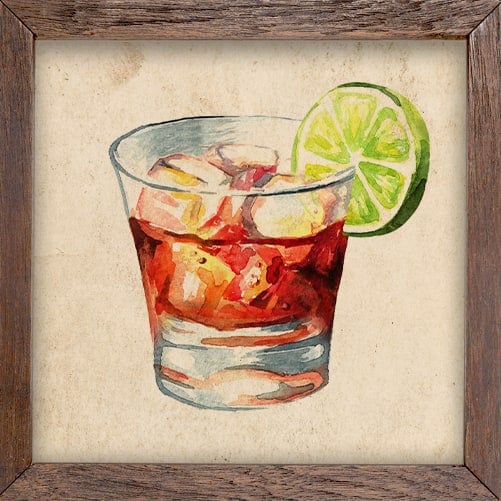
Tennessee whiskey can be classified as a type of bourbon whiskey, but it has some additional requirements that make it unique. First of all, it has to be produced in the state of Tennessee. Secondly, Tennessee whiskey must be filtered through charred maple wood chips before aging. This step is called the Lincoln County process, charcoal leaching, or charcoal mellowing.
Just like bourbon, Tennessee whiskey is made from a mash that contains at least 51% corn. It has the same caramel-like sweetness of bourbon, but the additional filtering process mellows out the taste by removing some of the more assertive alcohols and esters. The strong corn flavor of the whiskey is also softened, allowing other flavor notes to shine through.
- What Does Tennessee Whiskey Taste Like? Sweet and mellow with notes of oak, maple, and vanilla
- Tennessee Whiskey Brands: George Dickel, Jack Daniel's, Uncle Nearest
- Tennessee Whiskey Cocktails: Jack and Coke, Lynchburg Lemonade, Tennessee Highball
Back to Top
3. Irish Whiskey
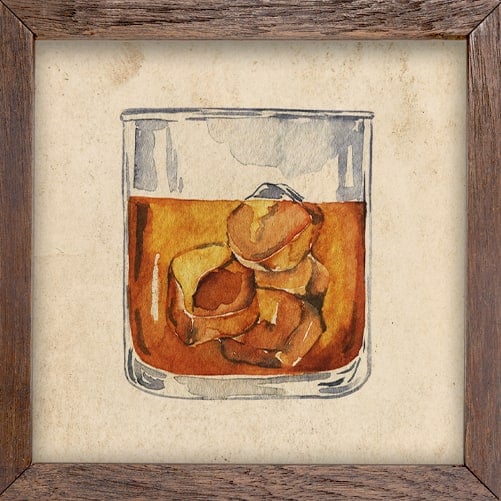
Irish whiskey can be difficult to define because of the experimentation at play with modern distilleries. One of the simplest requirements is that Irish whiskey must be produced in Ireland. It must be made with a mash that contains malted barley and aged in wooden casks for at least 3 years. To be labeled Irish whiskey, the spirit must contain no additives other than water and caramel coloring. Many Irish whiskeys are blended, but there are also Irish single malts, grain whiskeys, and pot still whiskeys.
Irish whiskeys are likely to be triple distilled, lending a soft, smooth mouthfeel to the spirit that makes it easy to sip. It’s also common for Irish whiskeys to be made from barley dried in a closed kiln, which doesn’t add the smoky flavor associated with scotch. The types of barrels used in maturation also add more complex flavors to whiskey as it ages. Irish whiskey is known for being less sweet than bourbon and more mellow than scotch.
What Is Single Pot Still Whiskey?
Single pot still whiskey is a type of Irish whiskey made with at least 30% malted barley and 30% unmalted barley. The unmalted barley, also called green barley, adds a strong cereal flavor to the whiskey. To be labeled single pot still, the whiskey must also come from a single distillery.
- What Does Irish Whiskey Taste Like? Smooth and slightly sweet with notes of oak, honey, and toasted grains
- Irish Whiskey Brands: Jameson, Tullamore Dew, Bushmills
- Irish Whiskey Cocktails: Irish Slammer, Irish Coffee, Pickleback
4. Rye Whiskey
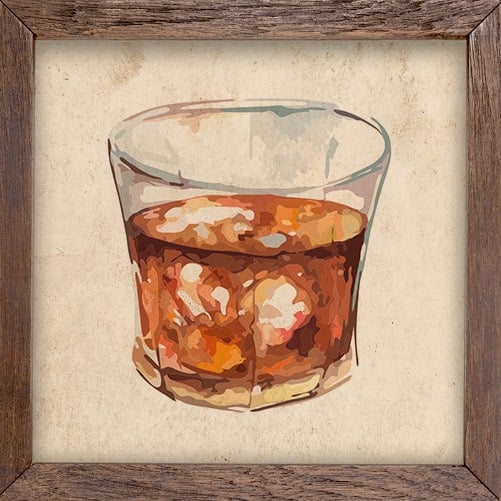
American rye whiskey is made with 51% rye grain mash. Just like bourbon, it must be distilled in the US and aged in new oak barrels. To be labeled as straight American rye, the whiskey has to be aged for at least 2 years and contain no additives. The rye mash used to make rye whiskey produces a sharp, peppery bite that is starkly different from whiskey made with other grains. Instead of the sweet caramel flavor produced by corn mash, rye whiskey ends up with a dry, earthy flavor.
Rye vs Bourbon Old Fashioned
The Old Fashioned is a famous whiskey cocktail that can be made with bourbon or rye. It all comes down to the customer’s whiskey preference. Rye will produce an Old Fashioned that is spicy and dry, which is balanced by the sweetener used in the drink, usually a sugar cube. On the other hand, bourbon has a sweet flavor already, so less sugar can be used and sometimes the bitters are increased. The Manhattan cocktail is another mixed drink that can be made with either bourbon or rye to create a different flavor profile.
Canadian Rye vs American Rye
America isn’t the only country with a love for rye whiskey. Rye is also produced in Canada, but it differs from American rye whiskey. Instead of using a mash made primarily from rye, Canadian rye whiskey is made from other grains with just a small amount of rye added for flavor.
- What Does Rye Whiskey Taste Like? Assertive, dry, earthy, spicy
- Rye Whiskey Brands: Whistlepig, Pikesville Rye, Wild Turkey
- Rye Whiskey Cocktails: Rye Old Fashioned, Sazerac, Manhattan
Back to Top
5. Canadian Whiskey
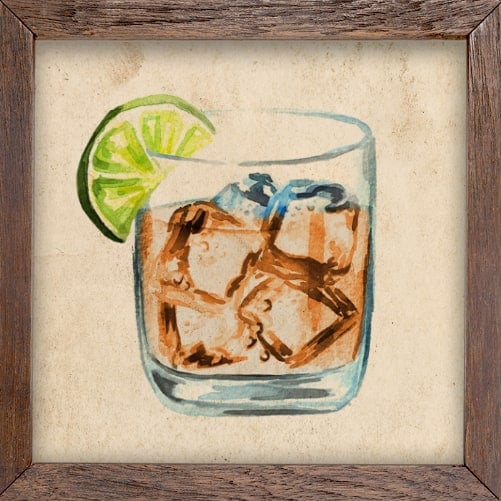
To be labeled as Canadian whisky, the spirit must be made in Canada and aged for at least 3 years in wooden barrels. The barrels can be new or used, and the mash can be made with any cereal grain. Caramel color and up to 9.09% additional flavorings can also be added. These relaxed requirements make room for distilleries to experiment with different grains and blends.
Traditional Canadian whisky is known for its blending, whether it’s blending batches made from different grains or blending whisky styles from other countries. Canadian whisky blends may even contain percentages of American bourbon or single malt scotch. To help achieve the perfect blend, Canadian distillers use a special technique. They produce a base whisky with a high alcohol content and a flavoring whisky with a low alcohol content. These separate batches are blended to strike the right balance between proof and flavor.
- What Does Canadian Whisky Taste Like? Smooth and light with spicy notes of vanilla
- Canadian Whisky Brands: Crown Royal, Canadian Club, Seagrams
- Canadian Whisky Cocktails: CC and Ginger, Canadian Whisky Sour, Seven and Seven
6. Scotch Whisky

To be labeled scotch, the whisky must be made in Scotland from primarily malted barley and aged at least 3 years in oak casks. Single malt scotch must be made from 100% malted barley and produced in a single distillery. The flavor profile of scotch is determined by the region where it was produced, the barrels used for aging, and whether the whisky is single malt or blended.
Peat Scotch
Peat plays a huge role in Scottish whisky production and contributes to the strong, earthy flavors of single malt scotch. But what is peat, and what does it have to do with whisky? Peat is a type of plant matter that forms from decomposing moss and other vegetal growth in the bogs (or peatlands) of Scotland. The Scottish tradition is to dry barley over smoked peat before making the mash, which adds assertive notes of tar, ash, and smoke. Peat is formed from plant matter local to the area, which is why regional distilleries in Scotland each have their own signature flavor.
Unpeated Scotch
Not all Scotch whisky is peated. There are single malts produced without smoked peat, which allows other flavors from the malted barley or wood barrels to shine through. Unpeated scotch may exhibit sweet, fruity, or chocolate notes.
- What Does Scotch Whisky Taste Like? Blended Scotch may be smooth, balanced, and sweet; Single malt Scotch may be smoky, peaty, and assertive; Unpeated single malt may be malty, fruity, and biscuity
- Scotch Whisky Brands: Dewar's, Glenlivet, Johnnie Walker
- Scotch Whisky Cocktails: Penicillin, Rob Roy, Scotch Toddy
Back to Top
7. Japanese Whisky
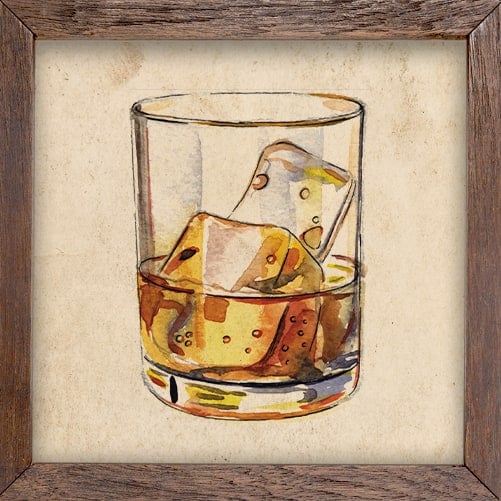
Japan has been producing whisky since the 1920s, but until recently the labeling requirements were not clearly defined. As of April 2021, Japanese whiskies must be produced in Japan and must include malted grain in the mash. Any water used in production must be extracted in Japan, and the spirit must be aged in wooden casks for at least 3 years. No additives besides caramel coloring can be used in the whisky.
Japanese whisky is known more for its innovation than for a particular style. The Japanese method of distillation was borrowed from the Scottish tradition, but there are aspects of the process that Japanese distillers have chosen to refine. For one, Scottish distilleries depend on one or two still sizes and shapes, but Japanese distillers experiment with different still sizes and shapes. During barrel aging, the use of a Japanese oak called mizunara wood imparts a range of distinct flavors like citrus, coconut, or sweet spices.
- What Does Japanese Whisky Taste Like? Smooth, balanced, delicate notes of smoke, floral, or citrus
- Japanese Whisky Brands: Yamazaki, Suntory, Nikka
- Japanese Whisky Cocktails: Japanese Highball, Mountainside, Mizuwari
8. White Whiskey

White whiskey is an unaged whiskey that remains clear and never ripens to a caramel color from years in a wooden cask. Formerly, white whiskey had to spend some time in a wooden barrel to be labeled as “whiskey”. Distillers got around this rule and kept their whiskey clear by using uncharred barrels. Now, the labeling requirements are being loosened and the term “white whiskey” can be used to label unaged or slightly aged whiskeys.
Since the aging process is what creates the layered complexity of whiskey, why would anyone want to order unaged white whiskey? Also called fresh whiskey, white whiskey retains the bright flavors of the grains used in fermentation. White whiskey made with corn tastes like corn, pure and simple. This makes white whiskey an interesting ingredient to use in craft cocktails.
Whiskey vs Moonshine
White whiskey and moonshine are both clear and unaged, but they aren't the same thing. One small detail sets the two spirits apart. Real bonafide moonshine is produced illegally to avoid taxation, and it's usually made in outdoor stills that are hidden from sight. White whiskey is made in legal, licensed distilleries.
That doesn't mean that some moonshiners haven't crossed over into the world of law-abiding whiskey distillers. Now you can find white whiskey made by former moonshiners from traditional moonshine recipes. Try serving your white whiskey cocktails in a mason jar glass as a nod to the infamous spirit.
- What Does White Whiskey Taste Like? Strong and bright with flavors of fresh-cut grains like corn, malt, or barley
- White Whiskey Brands: Buffalo Trace, Death's Door, Koval
- White Whiskey Cocktails: White Whiskey Punch, White Whiskey Margarita, White Dog Sour
Back to Top
Whiskey can be a complicated subject to navigate, especially when you factor in the different styles and their devoted fan bases. Now you should be armed with enough information to stock your bar with the finest whiskeys and make educated recommendations to your guests.
Printable Version






